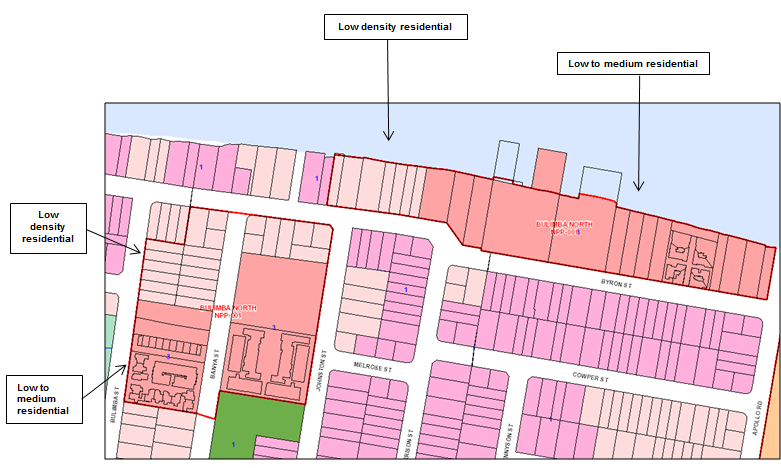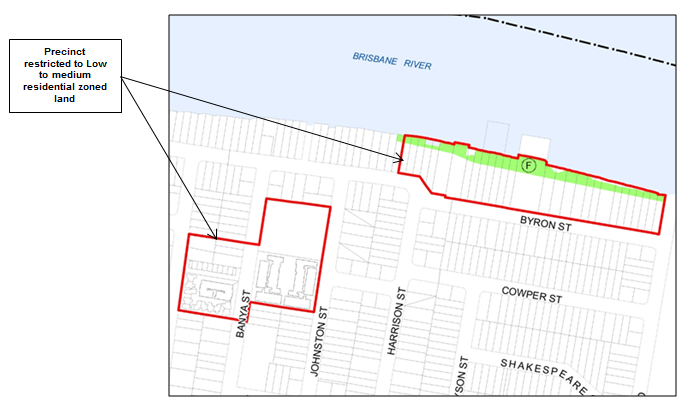Key issues:
- Brisbane City Council’s controversial proposed ‘ban’ on townhouses has now been released for public comment.
- The ‘ban’ is broader than just townhouses, and includes all forms of multiple dwelling as defined in Low density residential areas in Brisbane.
- You should check the zoning of your land to see whether you will be affected, particularly if you are located in one of the 11 neighbourhood plan areas which currently support development of townhouses and apartments on Low density residential zoned land.
Brisbane City Council’s controversial proposed ‘ban’ on townhouses has now been released for public comment. The ‘ban’ is broader than just townhouses and includes all forms of multiple dwelling as defined in Low density residential areas in Brisbane. It will be delivered through a major amendment to Brisbane City Plan 2014 (City Plan) to remove provisions in zone codes, development codes and neighbourhood plans supporting multiple dwellings (e.g. townhouses and apartments).
34 neighbourhood plan areas will be amended to include provisions directed at ensuring multiple dwellings are not accommodated in the Low density residential zone. Significantly, this includes 11 neighbourhood plans which currently have a policy intent supporting development of multiple dwellings in Low density residential areas.
The amendment package can be accessed here and is open for public comment until 26 August 2019.
Low density residential zone code
City Plan presently supports development of multiple dwellings in the Low density residential zone where it occurs on sites that are greater than 3,000m² and are accessible and well serviced by public transport and infrastructure.
Two of the key changes are overall outcome 6.2.1.1(4)(c) of the Low density residential zone and performance outcome PO51 of the Multiple dwelling code.
Overall outcome 6.2.1.1(4)(c) is proposed to change as follows:
| Current | Proposed |
|---|---|
Development, other than a dwelling house, including dual occupancy or a multiple dwelling is not accommodated within this suburban setting unless on a well-located site of over 3,000m2. | Development maintains a low density character in which multiple dwellings are not accommodated. |
Performance outcome PO51 (and the corresponding AO51) is proposed to be deleted entirely. It currently provides:
| If in the Low density residential zone | |
|---|---|
PO51 Development is located on a site that:
| AO51 Development is located:
|
The proposed new language is strong; multiple dwellings are not accommodated in the Low density residential zone.
Neighbourhood plans
A neighbourhood plan provides finer detailed planning for a particular suburb or group of suburbs. It is proposed that 34 neighbourhood plans in City Plan will be amended to include provisions directed at ensuring multiple dwellings are not accommodated for in the Low density residential areas of the suburb / neighbourhood.
Importantly, there are currently 11 neighbourhood plans which actively encourage the development of multiple dwellings on Low density zoned land within identified precincts of these suburbs. Those neighbourhood plans are the:
- Acacia Ridge - Archerfield neighbourhood plan;
- Bulimba district neighbourhood plan;
- Calamvale neighbourhood plan;
- Centenary suburbs neighbourhood plan;
- Darra - Oxley district neighbourhood plan;
- Forest Lake neighbourhood plan;
- Holland Park - Tarragindi district neighbourhood plan;
- Lower Oxley Creek south neighbourhood plan;
- Mt Gravatt corridor neighbourhood plan;
- Wakerley neighbourhood plan;
- Wynnum West neighbourhood plan.
For example, in the Centenary suburbs neighbourhood (Mt Ommaney, River Hills, Middle Park, Jindalee, Sinnamon Park and Seventeen Miles Rocks) the housing diversity precinct is intended to contain a “mix of houses and multiple dwellings” and there is “opportunities for some multiple dwellings” intended to facilitate housing choice for residents.1 That precinct will be removed from the neighbourhood plan.
In the Bulimba north precinct of the Bulimba district neighbourhood plan (Bulimba, Balmoral, Hawthorne, Norman Park), where multiple dwellings are currently the “preferred future land use”,2 the precinct boundary will be amended to exclude all land currently zoned Low density residential. The changes to the precinct boundary are shown below.

Current precinct boundary
Source: City Plan 2014

Proposed precinct boundary
Source: City Plan 2014, Major Amendment Package H
Have your say
The proposed amendments will affect a large number of properties in Brisbane. You should check the zoning of your land to see whether you will be affected, particularly if you are located in one of the 11 neighbourhood plan areas which currently support development of townhouses and apartments on Low density residential zoned land. If the amendments are adopted, affected owners may wish to consider making a request to apply the superseded planning scheme to a development application. Such a request must be made within one year after the planning scheme has been amended.
Brisbane City Council is seeking public comment and wants to know your opinion. You can lodge an online submission here. The last day to lodge a submission is 26 August 2019.
For more information or discussion, please contact HopgoodGanim Lawyers’ Planning team.
1. City Plan, s. 7.2.3.5.2(6)
2. City Plan, s. 7.2.2.4.2(4)


